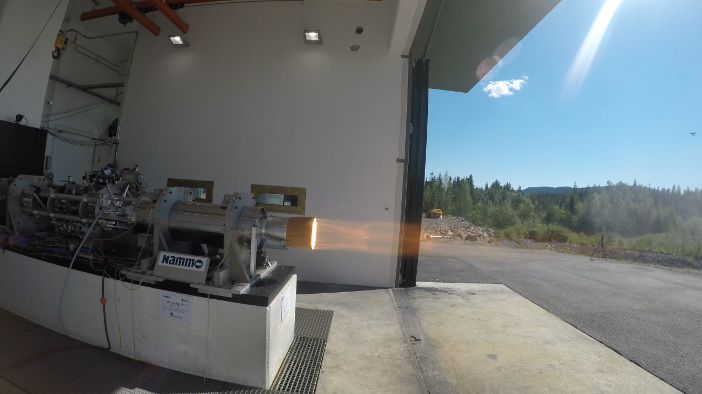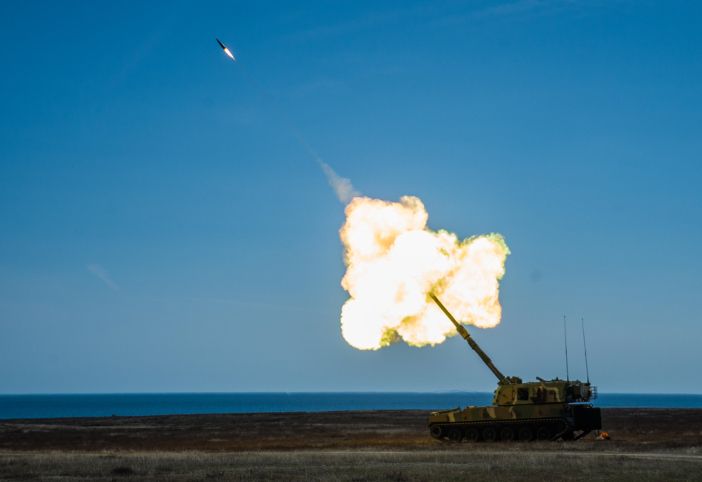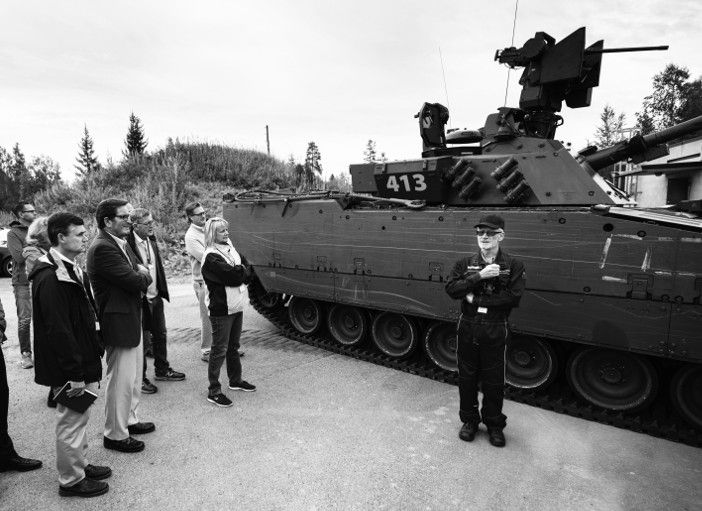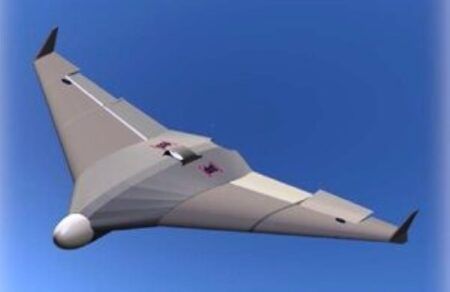Norwegian aerospace and defense company Nammo not only has some of the most advanced test facilities and equipment in the world at its Raufoss facility, it also has decades of experience.
Trond Aasmundstad, has managed activities there for the past 20 years. In this interview, he tells Aerospace Testing International about running the busy facility, handling multimillion-dollar test programs, and pigsties.
Q: Why did you choose an aerospace career and what was your first job?
My background is in the military. I went to the Naval Academy, trained as an engineer and served on many submarines, before I became a chief engineer on one. When I started my civilian career, I wanted to use my military background. I ended up in Nammo, which at the time was known as Raufoss Ammunition. Since then, I’ve had a few different positions in the company – quality assurance, international sales, and for the past 20 years, testing. Military and civilian are two different worlds, but knowing military systems helps a lot when you are working with ordnance products. Producing ordnance is a very different experience from using it.

Q: What is your current position and what does it involve?
I manage Nammo’s Raufoss Test Center. I am responsible for all the activities there. We test all of Nammo’s products and products for commercial customers. It’s mainly ammunition, rockets and rocket motors for civilian and military applications. We do a lot of the testing for the Norwegian defense force, including all of its maintenance testing for ordnance. We have a big civilian customer base, within space, automotive, and oil and gas. We do a lot of environmental testing for them – climatic, vibration and shock – a lot of safety tests at extremes.
We simulate climatic conditions using a variety of chambers. Raufoss is the largest testing laboratory in Norway. It is a certified NATO National Test Center and Nammo’s only fully equipped test facility.
Q: What is a typical day for you at work?
We do about 20 different tests on a normal day, which means we start very early, around 6:30am, with a cup of coffee, and finish late, around 11:00pm. It takes a lot of planning to conduct so many tests. In the summer, if we test tracer ammunition in the evening, we can get complaints about keeping people awake
at night, but not very often. People in Raufoss are used to it.
Q: What equipment and facilities does Nammo have?
We have a lot! The site at Bradalsmyra has existed for 100 years this year – it covers 400 hectares [990 acres] and is 100% owned by Nammo. There are 20 firing ranges with a maximum firing distance of 2,000m [6,560ft] and 80 buildings, so we can test all types of conventional ammunition, from 4.6mm to 155mm howitzer. We maintain around 70 different weapons, including test guns that have been custom-built for internal ballistic measurements, and operational guns that are identical to those used by soldiers or installed on platforms such as vehicles, aircraft and ships. We can test ammunition ranging from 4.6-155mm and with muzzle velocities exceeding 2,500m/s. We test rockets, shoulder-launched systems, and rocket motors, for military use and space rocket motors. We test armored vehicles and a lot of other things.

There is a lot of variety. There are 35 people working full-time on the site. Several of them have worked here for more than 40 years and have exceptional knowledge and experience. What test equipment is the center’s most important? We have four electromagnetic systems to conduct vibration and shock tests, including the LDS V994 machine, which is the world’s largest electromagnetic vibration machine and one of very few worldwide that is certified to test energetic products. We’re very proud that we have the world’s largest vibration machine out here in the woods in a remote part of Norway.
Q: What technology has changed the way you conduct tests the most?
Live test firing is still the most precise method to verify that military equipment meets strict requirements. But the systems we test are far more advanced than they used to be and the technology for test equipment has changed dramatically. Many of the products that we test I consider to be flying computers. So, what’s changed the most is data acquisition. Data acquisition is our core business. For example, high-speed cameras have moved from 40,000fps to 2,200,000fps during my time. That’s real technological progress. We invest a lot of money so we can have the most advanced test equipment.
Q: Is there a test that sticks in your mind?
We go elsewhere for longer-range missile tests. There was a secondary range on Lake Mjoesa, Norway’s largest lake. One October day in 1962, it was very foggy. The test manager was under a lot of pressure, there was a big delivery for a naval customer, so despite the fog he decided to go ahead with the tests. They started the test – 60 rounds – and couldn’t see where the projectiles landed. A rifled gun will always move to the right. If you don’t secure it, it moves. In the last 30 rounds they ended up landing on a farm – each a little further inside it. The farmer was out plowing a field and believed he was under attack. The last round hit the side of the barn and ended up in the pigsty. Then the test finished and the police came.
Q: How important are your tests?
Every test is important, especially to the customer. Our tests can mean millions of dollars lost if they fail. Among the most spectacular test we have done recently was the Nucleus rocket, which is being developed to launch science experiments and small satellites. Before we launched the rocket, we had been testing the rocket motor for 10 years. The ones that take the longest stick in the mind. We were testing the F-35 fighter’s ammunition for 15 years before it went on board the aircraft. That’s a lot of tests and a lot of money. When you see a project that takes so many years through to completion, it is fantastic.

Q: How is the company changing?
The company has also changed dramatically during the time I have worked for it. Nammo was initially a national Norwegian company – now we are very international. The job is very different. When we acquire another company from outside of Norway, it means the test center gets a new internal customer, because we are the only instrumented test center in Nammo.
Q: What skills and knowledge does weapons testing need compared with other types?
The skills for testing weapons and ammunition aren’t that different from other types of aeronautical testing. What you are testing is not important – the most important thing is people’s attitude toward safety and that they want to do a good job. Safety is always the number-one priority and the safety requirement is the same whether you are testing a 1g detonator or a 1-ton rocket motor. In the past 100 years at Bradalsmyra there has been only one major accident – back in the 1970s. What is the most important lesson you have learned? I tell myself every day that when you are working with such potentially dangerous items, never be stressed. It’s when mistakes are made. It’s simple – but when you’re in a hurry, walk slowly.
Q: What are you most proud of in your career?
I’ve had the privilege to lead this extremely professional team for the past 20 years. No one has done that before, so I am very proud of that. What does the future hold for the raufoss test center?
There is a new challenge every day, every hour, for us. At the moment we are building a large facility for testing space products. We’ve just finished a large building for testing F-35 ammunition.
Q: Any advice for people thinking about a career in aerospace?
It’s a lot of hard work but it’s never a dull job. Go for it and you will never have a boring day.





